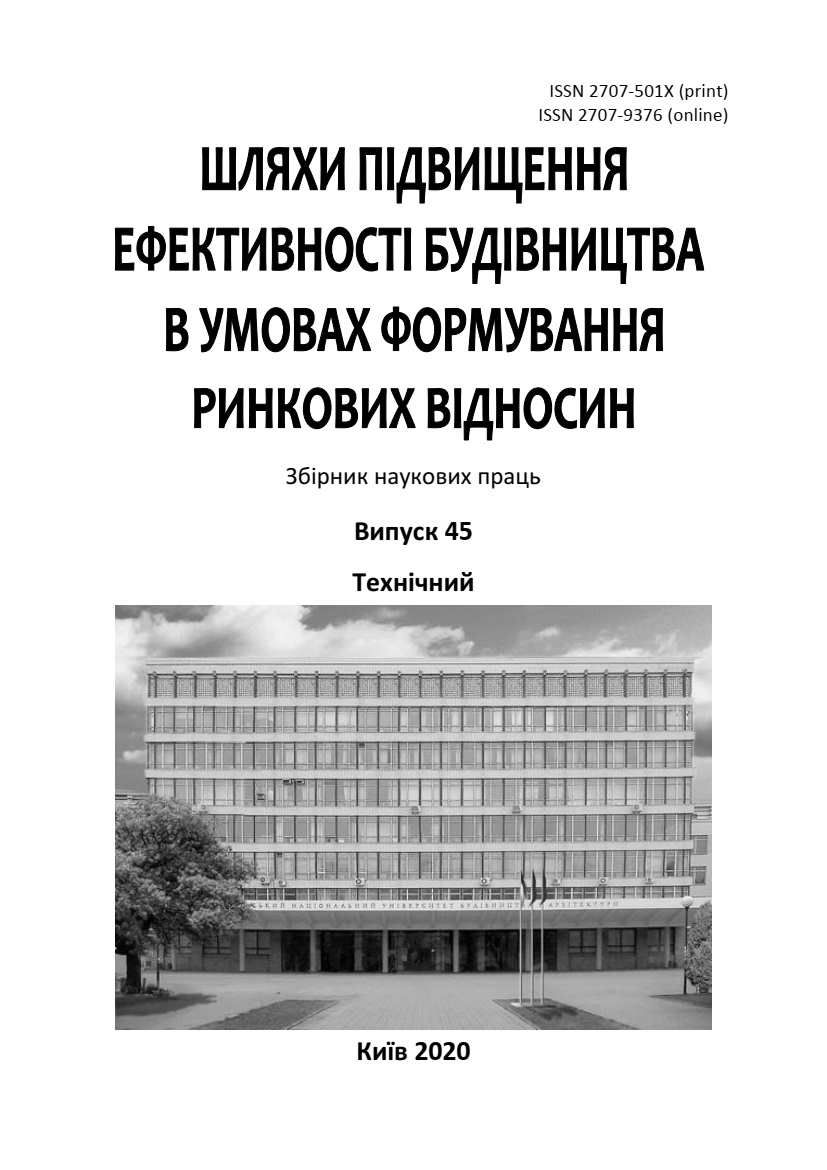On the calibration dependencies designing for concrete strength testing by sclerometric nondestructive metods
DOI:
https://doi.org/10.32347/2707-501x.2020.45.16-25Keywords:
concrete, non-destructive testing, standards, calibration dependence, correlation coefficient, humidity.Abstract
Sclerometric methods of testing concrete, in particular, the rebound hammer testing, retain their positions as the most common indirect methods for concrete strength determining in situ. They are used as a means for technological testing during the buildings construction, as well as during their inspection during maintenance. Indirect parameters of current sclerometric devices are usually point-values: the rebound index, the diameter and depth of the print, the duration of the indenter insertion process, and the maximum interaction force. However, the lack of an unambiguous relationship between these parameters and the strength of concrete leads to additional uncertainty of the test result, which is one of the problems of sclerometric methods of concrete control. The instability of the calibration dependencies of the method is also observed. Even strict compliance with the requirements of the procedure does not guarantee the repeatability of the obtained dependencies.
The article considers the possibility of improving metrological indicators of calibration dependencies of sclerometric methods by introducing an additional parameter-concrete humidity. The possibility of combining two sclerometric methods – the elastic rebound method and the shock pulse method is also considered. Data were obtained on concrete samples with a curing time of 25..60 days. Two-parameter calibration dependencies, including concrete humidity as an additional parameter, allowed for all experimental series of samples to reduce the residual mean square deviation of the calibration dependence of elastic rebound and shock pulse methods by 10%..16%, and to consistently provide the minimum acceptable value of the correlation coefficient r = 0.7 for the studied concrete compositions. The influence of concrete heterogeneity on the readings of sclerometric test methods is considered.
The developed method of constructing two-parameter calibration dependencies can be recommended for inclusion in the current standards governing the determination of the strength of concrete structures under construction.
References
Бетоны. Определение прочности механическими методами неразрушающего контроля: ГОСТ 22690-2015. – М.: 2014. – 23 с.
Джонсон, К. Механика контактного взаимодействия / К. Джонсон – М.: «Мир», 1989. – 509 с.
Испытания бетона. Неразрушающий контроль прочности: СТБ 2264-2012 – Введ. 01.01.2013. – Минск: Госстандарт, 2013. ‑ 20 с.
Снежков, Д.Ю. Основы мониторинга возводимых и эксплуатируемых железобетонных конструкций неразрушающими методами / Д.Ю. Снежков , С.Н. Леонович ‑ Минск: БНТУ, 2016. ‑ 330 с.
Pucinotti, R. The use of multiple combined non destructive testing in the concrete strenght assessent: applications on laboratory specimens / R. Pucinotti // [Electronic resource], 2003. ‑ Mode of access: http://www/ndt.net/article/hsndtct2007/files/Pucinitti_Crisci_etat.pdf. ‑ Date of access: 02.02.2016
Downloads
Published
How to Cite
Issue
Section
License
Copyright (c) 2020 D. Snezhkov

This work is licensed under a Creative Commons Attribution 4.0 International License.
Authors who publish with this journal agree to the following terms:
- Authors retain copyright and grant the journal right of first publication with the work simultaneously licensed under a Creative Commons Attribution License that allows others to share the work with an acknowledgement of the work's authorship and initial publication in this journal.
- Authors are able to enter into separate, additional contractual arrangements for the non-exclusive distribution of the journal's published version of the work (e.g., post it to an institutional repository or publish it in a book), with an acknowledgement of its initial publication in this journal.
- Authors are permitted and encouraged to post their work online (e.g., in institutional repositories or on their website) prior to and during the submission process, as it can lead to productive exchanges, as well as earlier and greater citation of published work (See The Effect of Open Access).

